Symbio designs a virtual air traffic control simulator at Orly
The mission was mandated by the DTI, to serve the SNA users at Orly. It targeted the following points:
- Optimal positioning of the equipment on the furniture in full accordance with ergonomic standards and the typical morphology of the target user population (French)
- Optimal placement of furniture in the virtual visual control room, maximizing the vision of the areas to be seen
- Volumetric design of the furniture to accommodate technical equipment, both external and internal to the furniture
- Entire mission to be carried out in virtual reality in our SymLab design environment
- Fully participatory approach with the end-users, who were provided with a virtual reality goggle and the SymLab design environment
The challenges
We met the following challenges during the project. They allowed us to further develop our tools and refine our design methods.
- Displaying a panoramic view of the rotunda, and allowing to fine tune it directly within SymLab
- Choosing where to place the entrance door in the rotunda, and allowing to fine tune that position directly with SymLab
- Adapting our mannequins to the French population to represent 3 types of operators with different sizes
- Fine-tuning the equipment positions on the workstations, making sure that it can be interacted with by the 3 families of operators
- Designing furniture that resembles that of the real visual control room being simulated
The results
The whole project was done in virtual reality, in our proprietary VR tool, SymLab. The DTI already had a virtual reality headset. An additional headset was provided to the SNA at Orly. The DTI and SNA actors were therefore able to work directly with us, in a participative way, in SymLab, on the design of the furniture and the virtual control room.
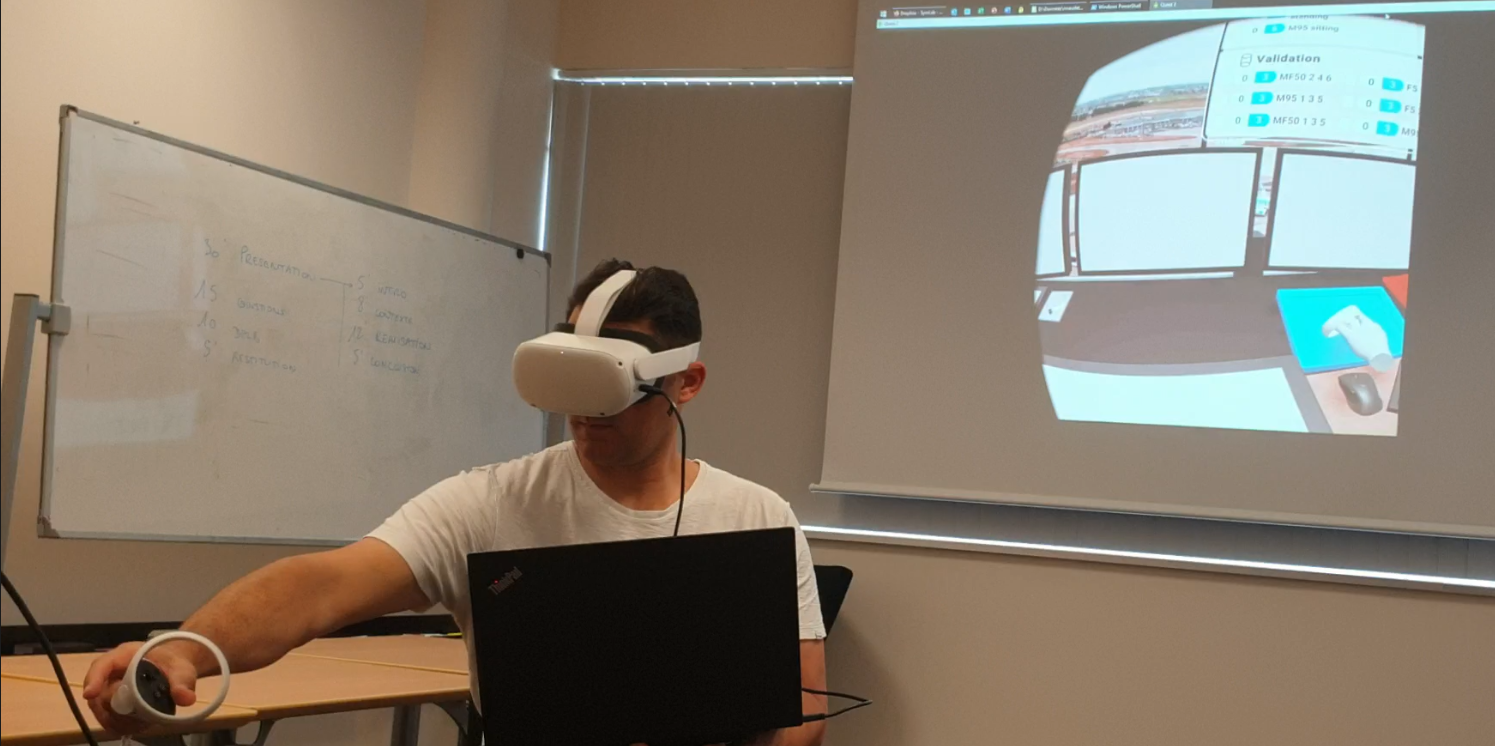
The SymLab design environment, developed internally by Symbio, allows the editing of the layout of equipment on workstations directly in VR, during participative work sessions. The same applies to the furniture in the virtual visual control room, which can be created on demand and placed wherever appropriate. End users can therefore directly design their own future work environment.
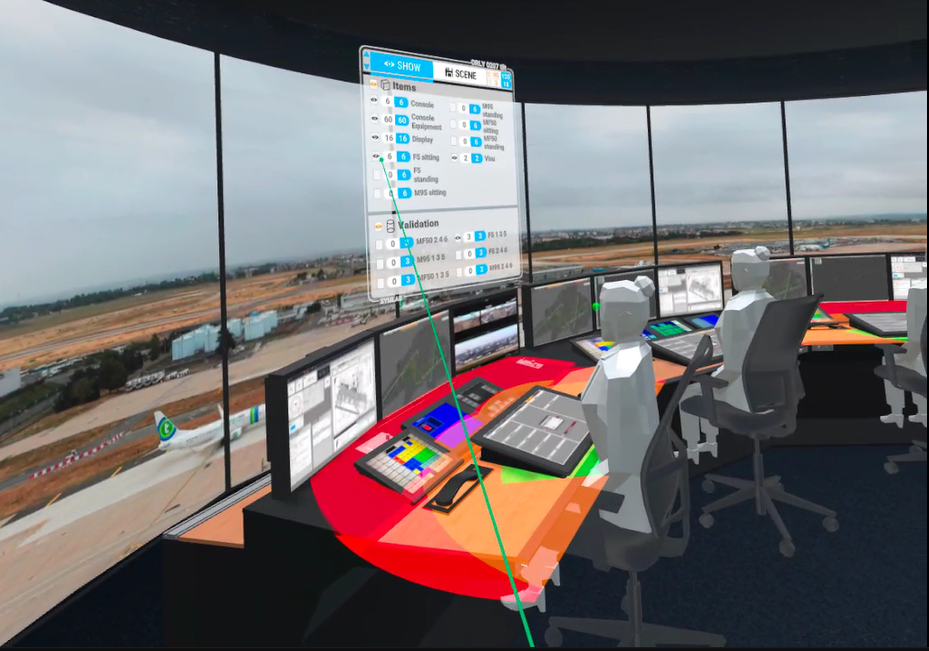
A panoramic view of the airport site is directly integrated into the VR environment.
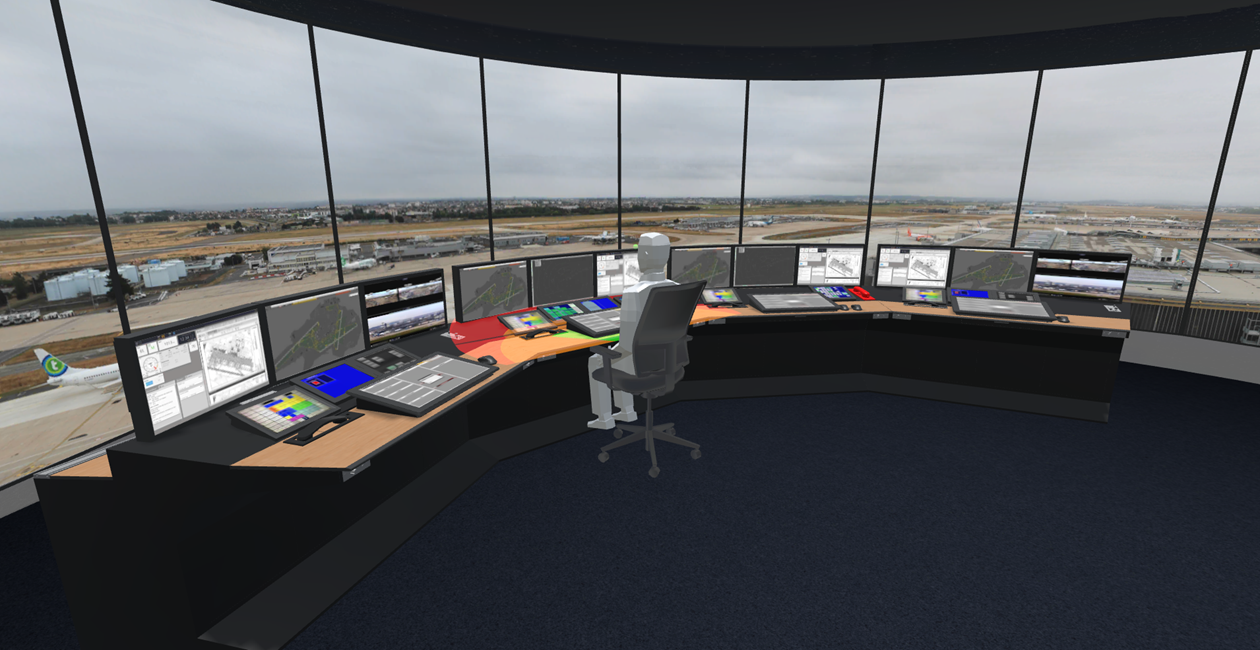
SymLab provides sophisticated ergonomic validation tools that allow for the fine-tuning of the position of all equipment on the workstations, taking into account three human character sizes: 5th percentile female, 50th percentile for the mixed male-female population, and 95th percentile for the male population. The percentiles are based on anthropometric tables specific to the target French population of users.
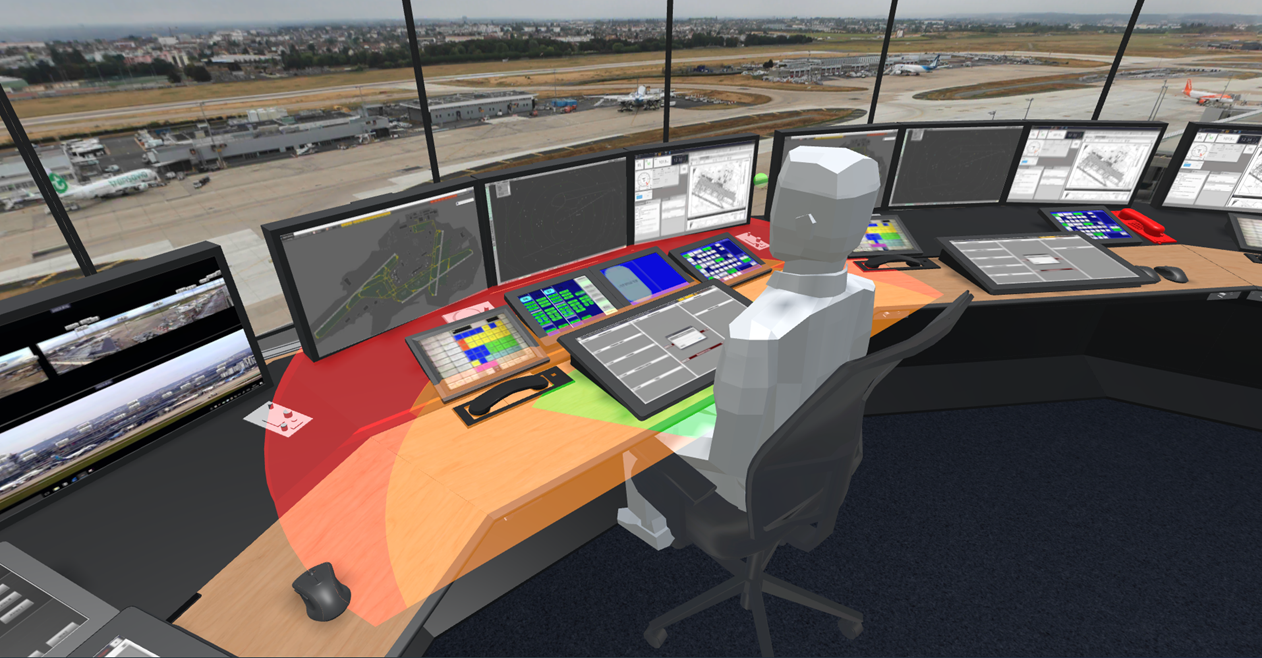
The furniture allowing to receive and correctly position the equipment as designed in the previous steps was then designed by Symbio, respecting the expected similarity with the furniture of the real operational visual control room.
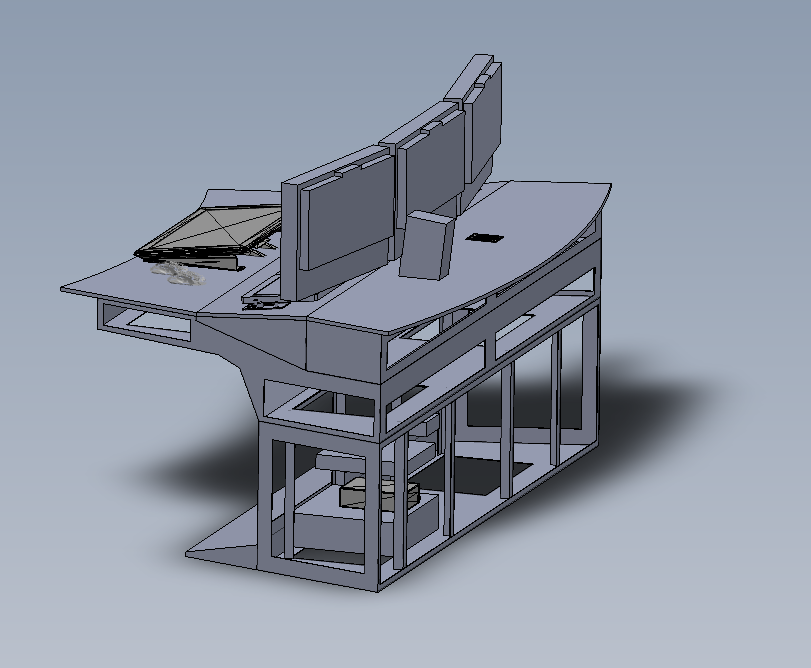 |
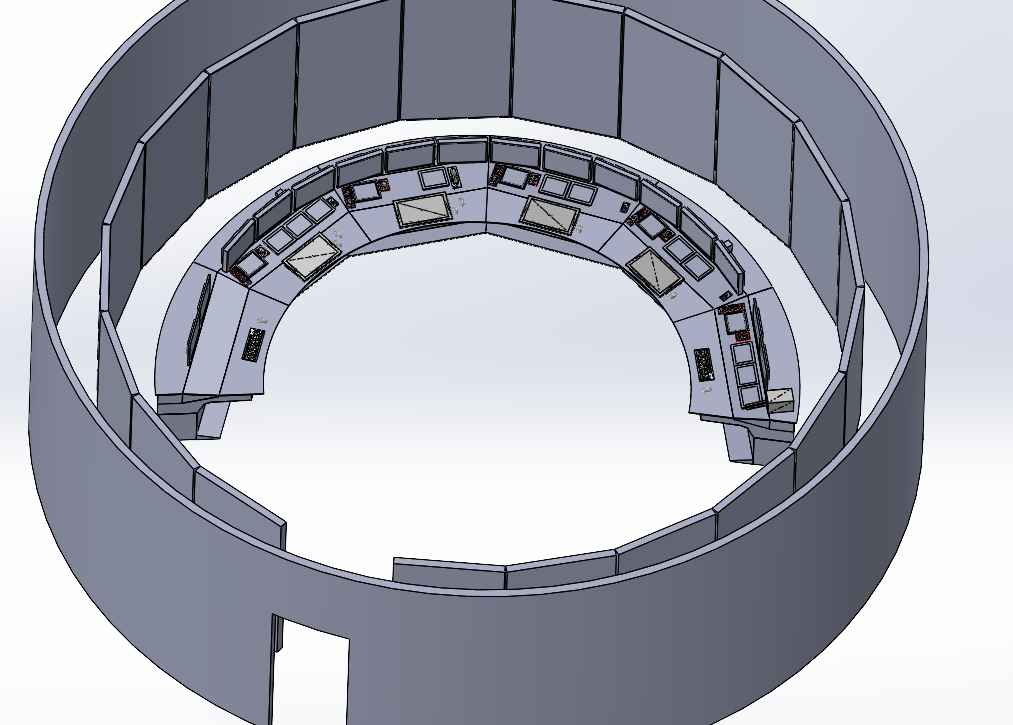 |
Plans and 3D models of the furniture, including the fine positioning of the equipment, have then been produced and provided to the DTI, to allow their realization by a specialized furniture supplier. A plan and 3D model of the final visual control room layout was also included in the project's deliverables
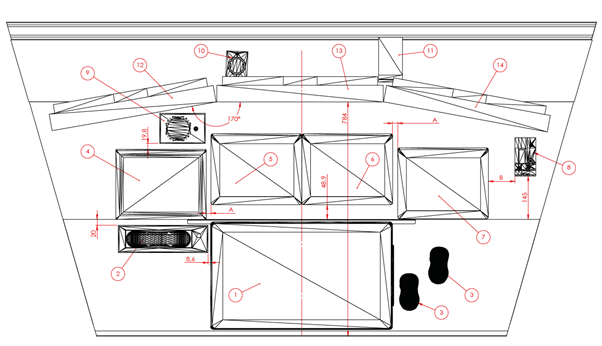 |
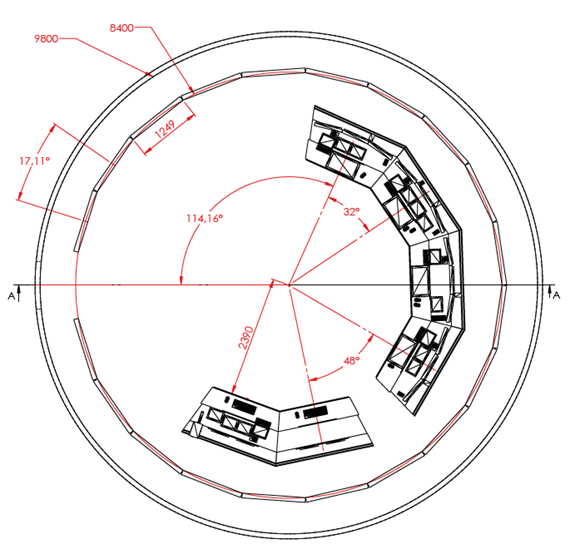 |
About the DTI
The Direction de la Technique et de l'Innovation (DTI) is a department of the French Ministère de la Transition Ecologique et Solidaire attached to the Direction des Services de la Navigation Aérienne (DSNA) and the Direction Générale de l'Aviation Civile. (DGAC).This department is responsible for defining, building and installing major air navigation systems and assisting air traffic control for the DSNA, which provides air traffic management services and other services.
About the DSNA
The Direction des Services de la Navigation Aérienne (DSNA) is the agency in charge of air traffic control, communication and information for France. It is a part of the Ministry of Sustainable Development and was created by decree in February 2005. The DSNA works in close coordination with its military counterpart, DIRCAM and since 2011 military controllers and civil controllers are being integrated into the same control centers using the same systems. DSNA is integrated into the Central European Functional Airspace Block (FABEC).

Share this:
